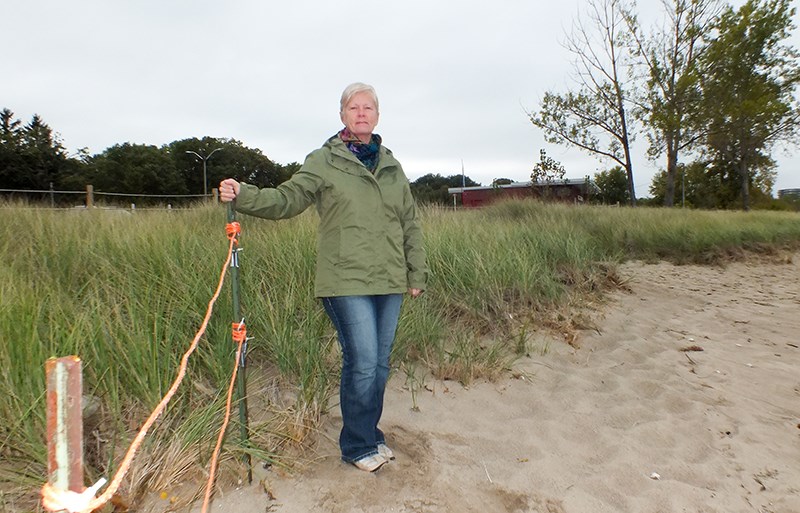Pam Wright
The beach grass at Canatara Park isn’t getting the respect is deserves, a local conservationist says.
“People don’t realize how important the dune grass is,” said Kim Gledhill. “People aren’t getting it. People just walk through and do whatever they want. It needs to be off limits.”
For the past four years, Gledhill and other volunteers including students from King George VI public school have been working to reestablish new sections of beach grass on Canatara’s north shore.
The plants, which anchor and stabilize sand with a network of hardy rhizomes, are separated and replanted in November when dormant.
The new sections are roped off, signs posted and walkways marked. But people walk through the grass and damage it, said Gledhill, who owns an eco-education company called Nature’s Way.
A grant from Friends of the St. Clair in 2013 got things started, and the following year volunteers from Lambton Wildlife and Sarnia Urban Wildlife planted more dune grass, which is also known as marram grass.
A Great Lakes Guardian grant in 2015 providing fencing and material for portable boardwalks that could be rolled up and removed at the end of each season.
But the walkways didn’t return this year.
Patti Ross, Sarnia’s manager of parks, forestry and horticulture, said the city’s accessibility coordinator deemed them unsafe because walkers and wheelchairs could get stuck in the gaps.
The plan is to replace them with more expensive matting, once funding becomes available, she added.
Gledhill said the portable boardwalks, based on plans from the Lake Huron Centre for Coastal Conservation, have been used with great success in other areas.
Hannah Cann, a stewardship coordinator at the centre, said maintaining healthy beach grass should be a top priority.
“There’s no better way to maintain the health of a beach,” Cann said. “People want towel-ready real estate. The dune grass is an inexpensive form of restoring and protecting a sensitive ecosystem.”
At Canatara, vandals have ruined fencing and pulled down signs. Only one “Staff Off The Grass” sign remains.
“It is extremely valuable,” Ross said. “You can see the dunes are higher where the grass is planted and we do want to focus on it.”
Gledhill believes Canatara could wind up with a stone beach if the sand that’s there isn’t protected. In 2014, Canatara Beach achieved the coveted Blue Flag beach international designation — a fact widely touted by Sarnia-Lambton tourism.
Cooperation is needed if a healthy ecosystem of dune grass is to survive in the park, Gledhill says.
“We’re not trying to get rid of people and their activities. We want to work with nature.”
Sarnia oversaw one beach grass planting this year and another is planned for next year.
Gledhill said students from King George VI and Lakeroad Public are volunteering for another planting this fall on the east beach.
